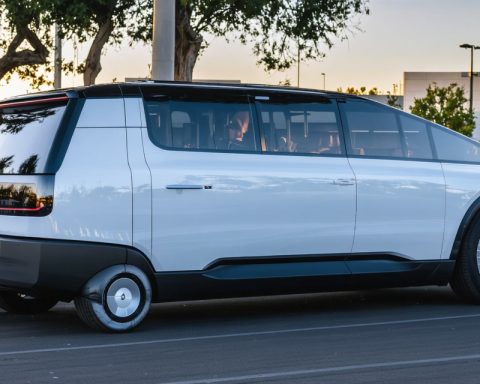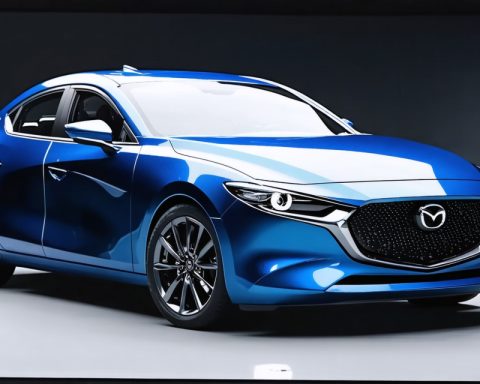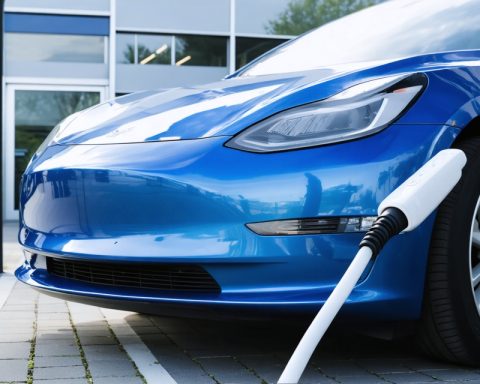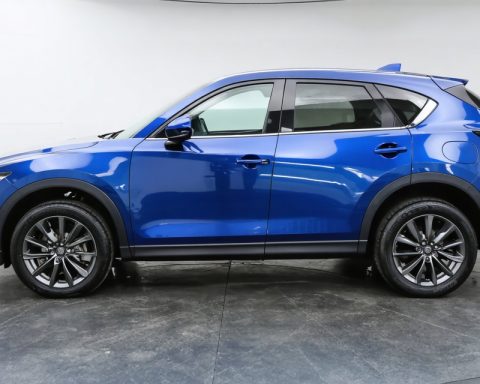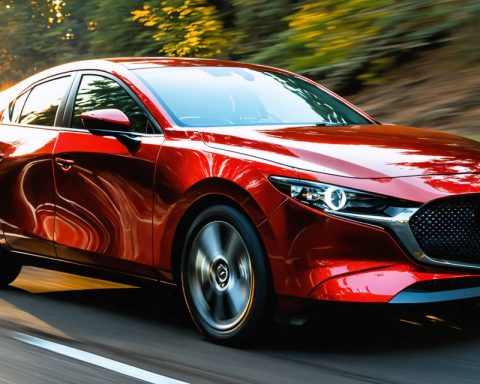- Volvo’s EX30 Cross Country demonstrates the capability of modern electric vehicles (EVs) to perform in harsh winter conditions, challenging the myth that cold weather hinders EV performance.
- EV sales in the U.S. are projected to reach over 1.2 million units by 2024, up from 326,000 in 2019, reflecting significant growth and acceptance.
- Norway leads in EV adoption, with nearly 90% of cars sold in 2024 being electric, showcasing the shift towards EVs in snowy climates.
- EVs benefit from evenly distributed weight and instant torque, enhancing traction and acceleration on slippery roads.
- Volvo’s engineering prowess ensures EVs operate reliably amidst winter extremes, underlining their ability to excel, not just endure.
- The integration of safety features in Volvo’s design supports drivers in navigating challenging icy terrains with confidence.
The icy surface of the Swedish lake shimmered under a pale sun, calling to thrill-seekers and skeptics alike. For many, the pervasive myth that electric vehicles (EVs) falter in frigid conditions lingers like mist over a thawing fjord. But as I maneuvered Volvo’s EX30 Cross Country across this frozen expanse, physics humbly reminded me of its uncompromising laws. A momentary lapse in judgment sent the vehicle into an exhilarating 360-degree spin, landing softly in a snowbank – a testament to both the unpredictability of ice and the resilience of modern EVs.
In this sub-zero setting, just outside Luleå in northern Sweden, Volvo showcased their commitment to shattering misconceptions about EVs in cold climates. These are no longer the days when electric cars were a niche curiosity seen only in temperate zones. In fact, EV sales recently surged in the United States, with forecasts predicting over 1.2 million units sold in 2024 alone, a dramatic rise from the 326,000 estimated in 2019. The modern EV isn’t just navigating winter – it’s winning.
While it’s indisputable that inclement weather challenges all vehicles, whether they sip gasoline or harness electrons, Volvo’s engineering prowess shines through. EVs inherently offer advantages like evenly distributed weight from low-slung battery packs, which enhance traction. Add to this the immediate torque delivery from electric motors, and the vehicle achieves smoother acceleration and better adherence to slippery roads.
Yet, it isn’t just about technological marvels; Volvo’s adventure in Sweden is a stark rebuttal to myths that cold saps EV performance. Drivers in Norway, a nation synonymous with fierce winters, have embraced the electric revolution; nearly 90% of cars sold there in 2024 have been electric. It’s clear that the times are changing.
When I piloted Volvo’s EX90, the soft rumble of its dual motors gave me the confidence to tackle winding, snow-draped roads without fear. The vehicle’s robust design absorbed the icy challenges with aplomb, delivering a foreign sensation of monotony in motion: It simply worked, like any competent vehicle should, leaving no dents from stray reindeer encounters in its wake.
Moreover, the controlled chaos of Volvo’s ice track offered a playground where the boundaries of EV performance met tested bravery. The crossover between safe family motoring and potential Jack Frost antics revealed the seamless integration of safety and seduction, coaxing drivers towards measured challenges while protecting them from snowbound folly.
As I concluded my journey across Sweden’s icy latitudes, the crisp air whispered that EVs could, indeed, thrive amid winter’s extremes. These machines, bolstered by advancing technologies and ever-improving batteries, are not hindered by snowdrifts or biting winds. Instead, they assert their place in the cold with unwavering reliability.
Beyond the ice and snow, Volvo’s trial by winter underscores a simple message: Electric vehicles are not just built to endure; they are crafted to excel. For anyone doubting their cold-weather tenacity, the proof lies on frozen lakes and snow-covered roads worldwide, where the silent hum of progress speaks volumes.
The Cold Truth About Electric Vehicles: How EVs Are Thriving in Winter Wonderlands
Demystifying EVs’ Performance in Cold Weather
The notion that electric vehicles (EVs) struggle in cold climates is rapidly becoming outdated. As Volvo’s recent demonstration in Sweden illustrates, these vehicles are not only capable but also excel in challenging winter conditions. Let’s dive deeper into the realities of driving EVs in winter and provide some actionable insights.
The Science Behind EV Performance in Cold
1. Battery Efficiency and Range:
– Cold weather can reduce battery efficiency, potentially decreasing range by 10-40%. However, modern EVs are equipped with sophisticated thermal management systems to mitigate this effect (source: U.S. Department of Energy).
– Pre-conditioning the vehicle, which involves heating the cabin and battery while still plugged in, can significantly conserve energy and maintain range.
2. Weight Distribution and Traction:
– The placement of EV batteries creates a low center of gravity, enhancing stability and traction on slick surfaces.
– Many electric vehicles, like Volvo’s EX30 and EX90, offer all-wheel-drive options which improve performance on ice and snow.
Real-World Use Cases and Market Trends
– In Norway, nearly 90% of vehicles sold in 2024 are electric, signifying a profound shift in consumer confidence and acceptance of EVs in cold-weather countries.
– The U.S. is following suit, with EV sales projected to reach over 1.2 million units in 2024 (source: EVAdoption).
How-To: Optimize Your EV for Winter
1. Pre-Conditioning: Use your EV’s app to warm up the cabin and battery prior to driving.
2. Tire Management: Equip your vehicle with winter tires to improve grip and safety.
3. Charging Strategy: Keep your battery charged above 20% to prevent reduced performance.
4. Driving Habits: Drive conservatively to maximize range. Slow acceleration and regenerative braking can optimize battery use.
Pros and Cons Overview
Pros:
– Instant Torque: Smooth power delivery aids in preventing slippage on icy roads.
– Environmentally Friendly: Reduces carbon emissions year-round, including winter.
Cons:
– Reduced Range: Cold weather impacts battery efficiency.
– Longer Heating Times: EVs might take longer to heat up compared to traditional vehicles.
Expert Insights and Future Predictions
– Continuous advancements in battery technology are expected to minimize winter range reduction within the next decade.
– Infrastructure improvements, like more widespread availability of fast chargers, will support EV viability in colder regions.
Security and Sustainability Highlights
– EVs produce zero tailpipe emissions, aligning with global sustainability goals.
– Enhanced safety features in modern EVs, including advanced traction control, contribute to safer winter driving.
Actionable Recommendations
– Consider an EV with a robust thermal management system to optimize winter driving efficiency.
– Explore incentives and rebates available for EV purchases, which can offset initial costs.
– Stay informed via credible EV platforms and community forums to gain practical advice from other cold-weather EV owners.
For more information on electric vehicles and sustainable driving, visit Volvo Cars.
With these insights, it’s evident that electric vehicles are not only equal to the challenge posed by winter but are winning it. As technologies evolve, the advantages of driving electric in all seasons will only become more pronounced.




